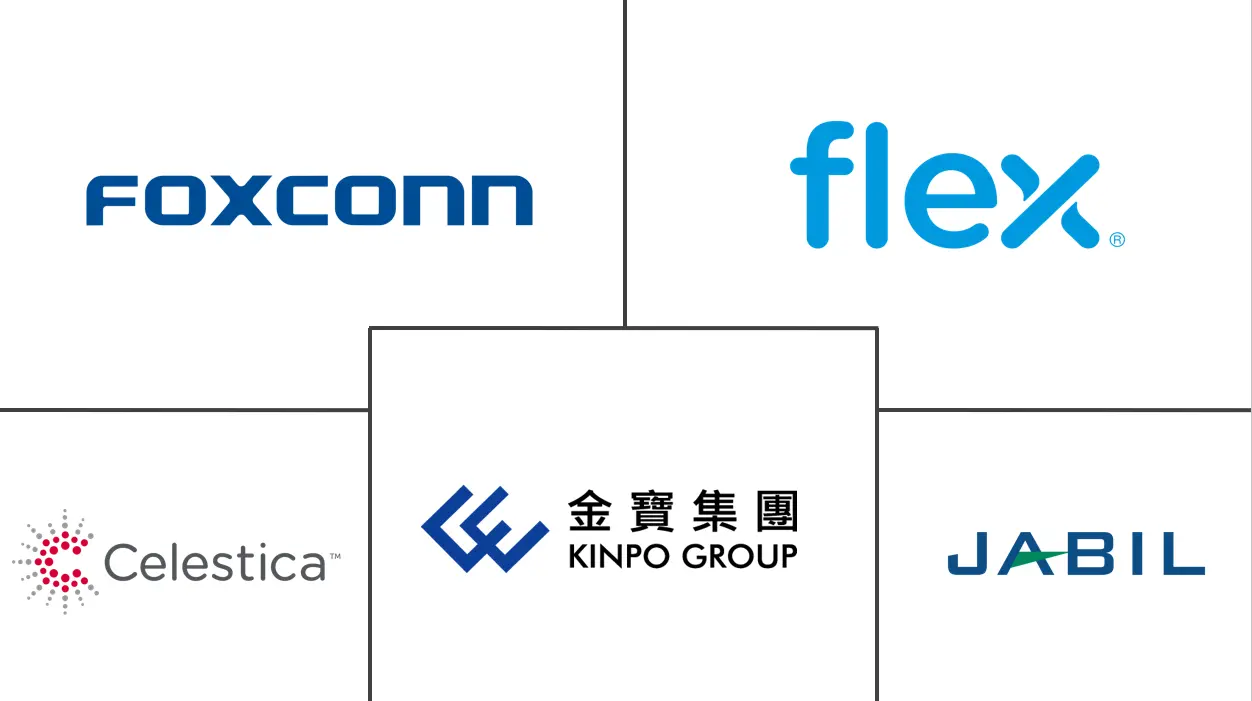Market Size of Contract Manufacturing Industry

| Study Period | 2019 - 2029 |
| Market Size (2024) | USD 0.68 Trillion |
| Market Size (2029) | USD 1.10 Trillion |
| CAGR (2024 - 2029) | 8.70 % |
| Fastest Growing Market | Asia Pacific |
| Largest Market | Asia Pacific |
Major Players
*Disclaimer: Major Players sorted in no particular order |
Contract Manufacturing Market Analysis
The Contract Manufacturing Market size is estimated at USD 0.68 trillion in 2024, and is expected to reach USD 1.10 trillion by 2029, growing at a CAGR of 8.70% during the forecast period (2024-2029).
- Companies are increasingly outsourcing manufacturing to concentrate on core competencies, minimize capital expenditure, and leverage advanced technologies. The infusion of cutting-edge automation technologies, notably artificial intelligence and robotics, revolutionizes contract manufacturing. These advancements boost efficiency, cut costs, and elevate quality control standards. AI-driven systems empower manufacturers to swiftly adapt to changing production demands, while robotics ensure heightened precision and speed.
- There is a pronounced shift toward sustainability in the contract manufacturing realm. Companies embrace eco-friendly initiatives, from harnessing renewable energy to effective waste management. This pivot is largely fueled by consumer appetite for green products and mounting regulatory pressures.
- As consumers increasingly seek personalized products, a notable shift toward customizable manufacturing processes exists. Contract manufacturers fine-tune their production lines for enhanced flexibility, enabling swift changeovers and scalability to cater to diverse client demands. This evolution underscores a growing consensus: the era of one-size-fits-all solutions is waning.
- The Russia-Ukraine War underscored vulnerabilities in global supply chains, leading to an intensified focus on resilience. Contract manufacturers diversify their supplier bases, leverage digital tools for real-time visibility, and craft contingency plans to mitigate disruptions. This proactive stance is vital for ensuring consistent production and delivery. In a similar vein, design giants like Apple are channeling investments to shift and broaden their manufacturing footprint beyond China.
- Global supply chain disruptions, from geopolitical tensions or natural disasters, can throw production timelines and costs off balance. A report from TD Cowen highlights that Apple's suppliers are moving their manufacturing bases away from China, driven by production delays, among other factors. Apple, alongside its 188 key suppliers, is ramping up investments to accelerate this relocation strategy. The report further notes that if even a single critical component remains tied to the original region, the relocation will be deemed only partial.

